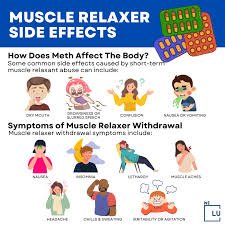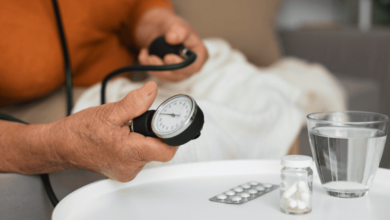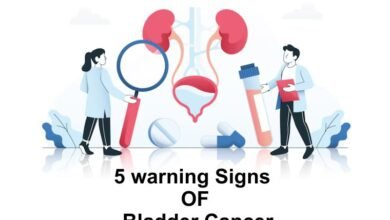Chronic Stiffness: Signs, Symptoms & When to Seek Help
Chronic Stiffness Unveiled: Signs, Symptoms, and When to Seek Help

Chronic stiffness is a condition that affects millions of people worldwide, often leading to discomfort, reduced mobility, and a diminished quality of life. Unlike occasional stiffness that may arise after a strenuous workout or a long day of sitting, chronic stiffness persists over time and can be a sign of underlying health issues. Understanding the signs, symptoms, and when to seek help is crucial for managing this condition effectively.
What is Chronic Stiffness?
Chronic stiffness refers to a persistent feeling of tightness or rigidity in the muscles, joints, or connective tissues that lasts for weeks, months, or even years. This condition can affect any part of the body, but it is most commonly experienced in the neck, back, shoulders, and legs. Chronic stiffness can be a symptom of various medical conditions, including arthritis, fibromyalgia, or autoimmune diseases, or it may result from lifestyle factors such as poor posture, lack of exercise, or prolonged periods of inactivity.
Signs and Symptoms of Chronic Stiffness
Recognizing the signs and symptoms of chronic stiffness is the first step toward addressing the issue. The following are common indicators that you may be experiencing chronic stiffness:
- Persistent Tightness: A constant feeling of tightness or rigidity in the muscles or joints, even after stretching or resting.
- Reduced Range of Motion: Difficulty moving a joint or muscle through its full range of motion, such as being unable to fully extend your arm or leg.
- Pain or Discomfort: Stiffness often accompanies pain, which may be dull, aching, or sharp, depending on the underlying cause.
- Morning Stiffness: Waking up with stiff joints or muscles that take a long time to loosen up, often lasting more than 30 minutes.
- Fatigue: Chronic stiffness can lead to fatigue, as the body expends extra energy to move stiff muscles and joints.
- Swelling or Inflammation: In some cases, stiffness is accompanied by visible swelling or inflammation in the affected area.
- Muscle Weakness: Stiffness can lead to muscle weakness over time, as the muscles are not used to their full capacity.
- Difficulty Performing Daily Activities: Chronic stiffness can make it challenging to perform everyday tasks, such as bending, lifting, or walking.
Common Causes of Chronic Stiffness
Chronic stiffness can arise from a variety of causes, ranging from medical conditions to lifestyle factors. Understanding the root cause is essential for effective treatment. Some common causes include:
- Arthritis: Arthritis, particularly osteoarthritis and rheumatoid arthritis, is a leading cause of chronic stiffness. These conditions cause inflammation in the joints, leading to pain, swelling, and reduced mobility.
- Fibromyalgia: Fibromyalgia is a chronic pain condition that affects the muscles and soft tissues, leading to widespread stiffness, tenderness, and fatigue.
- Autoimmune Diseases: Conditions such as lupus, ankylosing spondylitis, and psoriatic arthritis can cause chronic stiffness as the immune system attacks healthy tissues.
- Injuries: Past injuries, such as sprains, strains, or fractures, can lead to chronic stiffness, especially if they were not properly treated or rehabilitated.
- Poor Posture: Prolonged periods of poor posture, such as slouching at a desk or hunching over a phone, can lead to chronic stiffness in the neck, shoulders, and back.
- Lack of Exercise: A sedentary lifestyle can cause muscles and joints to become stiff and weak over time.
- Aging: As we age, the cartilage in our joints naturally wears down, leading to stiffness and reduced mobility.
- Overuse: Repetitive movements or overuse of certain muscles and joints can lead to chronic stiffness, particularly in athletes or individuals with physically demanding jobs.
- Infections or Illnesses: Certain infections or illnesses, such as Lyme disease or the flu, can cause temporary or chronic stiffness as a symptom.
- Stress and Tension: Chronic stress can lead to muscle tension and stiffness, particularly in the neck, shoulders, and back.
When to Seek Help for Chronic Stiffness
While occasional stiffness is usually not a cause for concern, chronic stiffness that persists for weeks or months should not be ignored. Seeking help from a healthcare professional is essential if you experience any of the following:
- Severe Pain: If your stiffness is accompanied by severe pain that interferes with your daily activities, it’s important to seek medical attention.
- Swelling or Redness: Swelling, redness, or warmth around the affected area may indicate an underlying infection or inflammation that requires treatment.
- Fever: If you experience a fever along with stiffness, it could be a sign of an infection or autoimmune condition that needs immediate attention.
- Unexplained Weight Loss: Unexplained weight loss combined with chronic stiffness may be a sign of a more serious underlying condition, such as cancer or an autoimmune disease.
- Numbness or Tingling: If you experience numbness, tingling, or weakness in addition to stiffness, it could indicate nerve compression or damage.
- Difficulty Moving: If your stiffness is so severe that it limits your ability to move or perform daily tasks, it’s time to consult a healthcare provider.
- Persistent Symptoms: If your stiffness does not improve with rest, stretching, or over-the-counter pain relievers, it’s important to seek professional help.
Diagnosing Chronic Stiffness
When you seek help for chronic stiffness, your healthcare provider will likely perform a thorough evaluation to determine the underlying cause. This may include:
- Medical History: Your doctor will ask about your symptoms, medical history, and any recent injuries or illnesses that may be contributing to your stiffness.
- Physical Examination: A physical exam will help your doctor assess the range of motion in your joints, identify areas of tenderness or swelling, and evaluate your overall muscle strength.
- Imaging Tests: Imaging tests such as X-rays, MRIs, or CT scans may be ordered to get a closer look at your bones, joints, and soft tissues.
- Blood Tests: Blood tests can help identify markers of inflammation, infection, or autoimmune conditions that may be causing your stiffness.
- Joint Aspiration: In some cases, your doctor may perform a joint aspiration, where a small sample of fluid is taken from the affected joint to check for signs of infection or inflammation.
Treatment Options for Chronic Stiffness
The treatment for chronic stiffness depends on the underlying cause, but there are several common approaches that can help alleviate symptoms and improve mobility:
- Medications: Over-the-counter pain relievers such as ibuprofen or acetaminophen can help reduce pain and inflammation. In more severe cases, your doctor may prescribe stronger medications, such as corticosteroids or disease-modifying antirheumatic drugs (DMARDs).
- Physical Therapy: Physical therapy is often recommended to improve flexibility, strength, and range of motion. A physical therapist can design a personalized exercise program to target the affected areas.
- Lifestyle Changes: Making lifestyle changes, such as improving your posture, incorporating regular exercise, and maintaining a healthy weight, can help reduce stiffness and prevent further complications.
- Heat and Cold Therapy: Applying heat or cold to the affected area can help relieve stiffness and pain. Heat therapy can relax tight muscles, while cold therapy can reduce inflammation.
- Massage Therapy: Massage therapy can help relax tight muscles, improve circulation, and reduce stiffness. A licensed massage therapist can target specific areas of tension.
- Stretching and Exercise: Regular stretching and exercise can help keep your muscles and joints flexible and strong. Low-impact activities such as yoga, swimming, or walking are particularly beneficial.
- Alternative Therapies: Some people find relief from chronic stiffness through alternative therapies such as acupuncture, chiropractic care, or herbal supplements. Always consult your doctor before trying any new treatment.
- Surgery: In severe cases where stiffness is caused by joint damage or deformity, surgery may be necessary to repair or replace the affected joint.
Preventing Chronic Stiffness
While not all cases of chronic stiffness can be prevented, there are steps you can take to reduce your risk:
- Stay Active: Regular physical activity is one of the best ways to prevent stiffness. Aim for at least 30 minutes of moderate exercise most days of the week.
- Maintain Good Posture: Practice good posture when sitting, standing, and walking to reduce strain on your muscles and joints.
- Stretch Regularly: Incorporate stretching into your daily routine to keep your muscles and joints flexible.
- Stay Hydrated: Drinking plenty of water helps keep your joints lubricated and can reduce stiffness.
- Eat a Balanced Diet: A diet rich in anti-inflammatory foods, such as fruits, vegetables, and omega-3 fatty acids, can help reduce inflammation and stiffness.
- Manage Stress: Practice stress management techniques, such as deep breathing, meditation, or yoga, to reduce muscle tension and stiffness.
- Avoid Overuse: Be mindful of repetitive movements or overuse of certain muscles and joints, and take breaks to rest and stretch.
Conclusion
Chronic stiffness is a common condition that can significantly impact your quality of life if left untreated. By recognizing the signs and symptoms, understanding the potential causes, and knowing when to seek help, you can take proactive steps to manage and alleviate your stiffness. Whether through lifestyle changes, physical therapy, or medical treatment, there are many options available to help you regain your mobility and live a more comfortable, active life. If you’re experiencing chronic stiffness, don’t hesitate to reach out to a healthcare professional for guidance and support.


